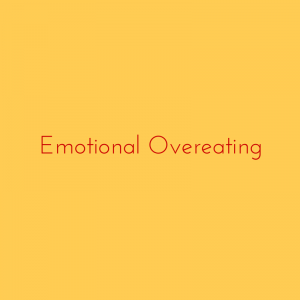Aren’t we suppose to feel good about the medical care we receive? Don’t we want to feel empowered by our medical team to improve our health? And we certainly don’t want to feel ashamed of our bodies when we visit a medical provider. Unfortunately, body shame and frustration is what some feel when they leave their providers office.
It has been my clinical experience that people often feel shame about their weight when going to the doctor. I think this is particularly true for those with larger bodies. According to a 2012 Rudd Center for Food Policy and Obesity policy brief titled “Weight Bias: A Social Justice Issue” indicates that in a study of 2,449 overweight or obese women, 69% experienced weight bias by doctors. And 52% indicated that weight bias had occurred on more than one occasion. Rudd Center’s policy brief indicates that weight bias in medical practices is a deterrent for seeking medical and preventive care.
Weight Stigma Awareness week sponsored by the Binge Eating Disorder Association (BEDA) was last week . I was glad to see that BEDA had an information sheet (Toolkit ) on how to talk with your provider medical about weight.
Unfortunately, well meaning and highly qualified health professionals including doctors, can sometimes be a barrier to patients accessing medical care. Part of the work that I do with clients is to help them navigate the health care system in such a way that feels empowering vs. demoralizing.
Here are tips to help feel empowered, not shamed, about body weight at medical appointments:
Before going to the doctor take stalk in how you feel about your body. Do you feel as though your body weight is affecting your health? Do you believe that you have to be a certain size to be healthy? Have you experienced bullying from family or friends about your body? Are you comfortable in your body? Do you have a distorted body image? Getting clear about your own experience and beliefs about your body may make it easier to communicate with your healthcare team around body image.
Remember we are health care consumers. Just like we shop around for a new car-visit different dealerships, test drive different makes and models-we can shop around for medical providers. For example, if trying to find a new primary care doctor schedule an initial appointment with the sole purpose of assessing if the doctor is a good fit for you. Think of it like taking a car for a test drive.
Before visiting your doctor think about how you want the discussion of body weight to go. BEDA’s toolkit suggests encouraging your health care team to “focus on health vs. weight”. Imagine yourself saying something like,”I know body weight is one component of my health. I am here today to talk about how else I may improve my health, besides focusing on my weight.” Or, “I am looking for a new primary care doctor that I can collaborate with. My last doctor ridiculed me about my weight. How can we make that different in your office?” If you are not ready to have a discussion with your doctor about your body weight then state that.
Write down questions ahead of time. And if comfortable, bring a friend or family member along to the appointment.
Click here to read the toolkit from the BEDA.




